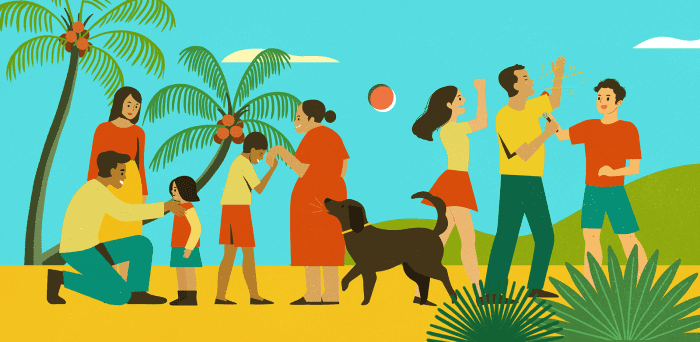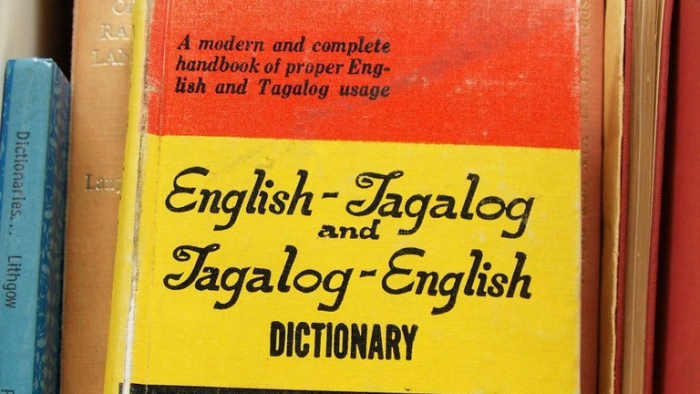Learning the Filipino Language: An Almost Comprehensive Guide
What Is Filipino?
Filipino is the national language of the Philippines. It belongs to and is descended from the Austronesian language family, a family language used and spoken in the Asia-Pacific. It also means the people who are born in the Philippines or of those with Filipino blood or descent and family.
Sneak Peek
- Introduction
- Filipino vs. Tagalog
- Difficulty
- Letters and Pronunciations
- Filipino Words
- Practice Makes Perfect
- Filipino Grammar
- Filipino Affixes and Conjugations
- Learning Outside the Box
- Resources
1. Before We Begin
Just like the many, many, many languages found in the Philippines, we have our own fair share of "identity crisis" that claims us to be African-Chinese-Japanese-Polynesian-Malay-Indian-Islander-Hispanic-European people of Asia. Natives consider themselves as Asians, specifically Southeast Asians, some Filipino diaspora may consider themselves Pacific Islanders. Some Austronesian countries may consider the people as from the Malay peninsulas, and some Hispanic countries consider the people to be the Hispanics of Asia. Although, this is just in terms of race. By ethnicity, Filipinos are considered to belong in a broad variety of being Austronesians. And overall, since the advent of migrations across Asia, trading of commerce and influence across culture, and European intervention and colonialism, the people have considered to call themselves, their culture, and their language as a simplified, unifying word "Filipino."
The language, country, people, and everything else that encompasses the Philippines has a very, very, very long and rich history and culture that shaped them into what and who the people are today. (And by long, I mean dating at least ten thousands to hundreds of thousands of, sadly, lost, fragmented, and missing history).
In this quasi-comprehensive article, I won't be going too much in-depth on how to learn the language itself. I will, however, leave helpful tips for either beginners or those willing to learn the language, the country, and the culture.
Ako si Darius. I am Darius.
Kumusta? How are you?
Ikinagagalak kong makilala ka. It's very nice to meet you.
What you can or cannot read above is a simple example on how to formally address oneself to another in the Filipino language. In an informal way, or rather the day-to-day way of communicating with another, we just tend to use the words "Hi," "Hello," or any other gesture to imply greetings.
I am born and raised in the Philippines for almost 22 years, native to Filipino language and very much used with the English language. I am also trying to learn other languages like Korean, Spanish, and Japanese. I can also speak and understand a fair amount of Ilonggo, or Hiligaynon language, a regional language, and understand other local and regional languages found and heard in the Philippines even if I have yet to learn them.
In my personal opinion, you'll have to learn the Filipino language in five key areas with each having increasing difficulties, from the easiest to the most difficult:
- spelling and writing words
- pronunciation, tone, and diction
- reading, listening, and comprehension
- sentence structure and grammar
- affixes, particles, and word conjugations
There are more things to learn in the Filipino language that I will be discussing in this article and I hope that they may, somehow, help you with learning the language.
I had this passion for teaching other people things that I know through research and expertise. And I am hoping that these may help you in the long run.
2. Filipino vs. Tagalog: Using the Proper Term
Even to natives, it has always been a debate and an ongoing problem on which term is the most proper way to use: Filipino or Tagalog.
To put it simply, the word "Filipino" is the most appropriate and correct word used to denote both the language and the general inhabitants of the country or those with Filipino blood and citizenship.
The Tagalog language is one of the foundations, or basis, for the Philippines to create its national language. Tagalog and the people who use it are found dominantly in the northern part of the country, in Luzon, where the country's capital is located. You see, the Philippines is made up of thousands of islands. It's an archipelago with a deep history and one with the most diverse people living on earth. This country also has around 120 to 175 languages and dialects and at least 16 recorded ancient writing systems.
Now you must be thinking that if people in the country are speaking so many languages, how do they communicate with each other? The answer is the creation of national identity: a national and official language. Filipinos use the Filipino language and English language for both written and spoken communication, so don't be surprised when a Filipino talking to you is jumping back and forth between Filipino and English.
Written within the country's constitution, the two existing official languages of the country are both Filipino and English. Back then, there isn't a national language for the country and each ethnolinguistic region has their own dominant languages and dialects. So, the late President Manuel L. Quezon and the Philippine Government created institutions and commissions to birth a national, official language for the country, one that the majority of the Filipino people will be using in their everyday life.
Tagalog was the first official name of the national language of the country from post-WW2 as a measure to avoid a potential civil war because of the regional tensions that arose when these institutions were built. However, Tagalog in itself is the dominant ethnolinguistic group and others had found it odd that the national language was based to only this group. So, to find or create a unifying, official standardized language, these commissions began to compose several representatives from major regions of the country. These representatives are then tasked to create a national language for the country, to enrich the language, and to make sure that all citizens, and their native local languages of the country, are included and are not left out. That is to say, those in charge of it changed Tagalog into Filipino to both define the official language of the country and its people.
Both Tagalog and Filipino differ from each other in terms of being a language and defining a person. In short, Filipino is the term used for the official language of the country and the people speaking it while Tagalog is one the languages dominantly found in the Philippines that was one of the languages used to standardize the national, official language of the country. Other languages that built (and still building) the Filipino language today are Kapampangan, Ilocano, and Panggasinense found in most of northern and central regions of Luzon; Bicolano and Waray-Waray found in regions of Visayas; Hiligaynon and Cebuano languages, and languages of Muslim Mindanao found across in region of Visayas and Mindanao.
3. The Difficulty to Learn the Filipino Language
I've seen search queries about people trying to learn this language fast and easy. And as a native speaker, I am telling you, this language could either be easy or difficult for you to learn. To be honest, it's not that hard. But to be specific, on a scale of one to ten where ten is the hardest, learning the Filipino language would be between seven and eight if you want to be fluent with the language as fast as you want. Like most languages, this intricate and distinct language takes time and effort for fluency. It will be a rough ride, but it will also be an enjoyable one.






